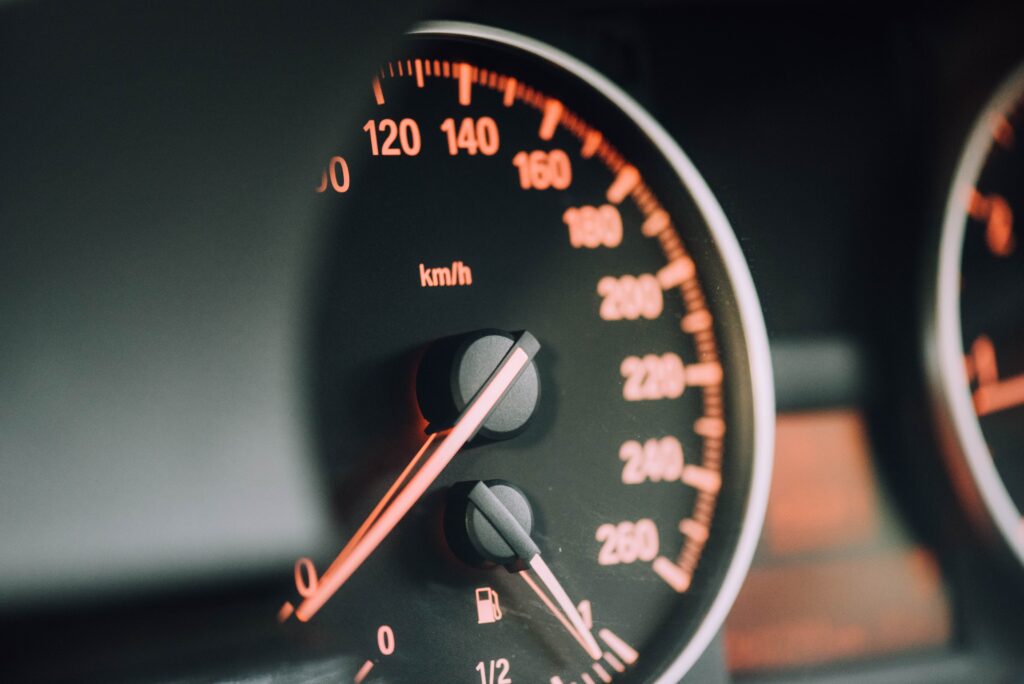If you’ve ever experienced the sudden loud bang from your car’s exhaust system, you may be wondering, “Why is my exhaust system backfiring?” Backfiring occurs when unburned fuel ignites in the exhaust system, resulting in a sharp gunshot-like noise. This article will explore the common causes of exhaust system backfires and provide some helpful insights on how to diagnose and fix this problematic issue. So, if you’re tired of the unexpected explosions coming from your car, let’s get to the bottom of what could be causing this backfiring mystery.

Understanding the Concept of Backfire
What is backfire?
Backfire refers to the loud popping or cracking sound that occurs in a vehicle’s exhaust system. It happens when the combustion process within the engine doesn’t go as smoothly as it should, resulting in the ignition of fuel and air occurring outside of the combustion chamber. This can be alarming to hear and may raise concerns about the performance and health of the vehicle.
Differentiating between backfire in cars and motorcycles
Before delving into the mechanics of a backfire, it’s important to note that backfires can occur in both cars and motorcycles. However, the causes and implications can be slightly different for each vehicle. While the general idea of backfire remains the same, the underlying factors contributing to it may vary due to differences in engine design and components.
Basic mechanics of a backfire
To better understand backfire, it’s necessary to have a basic understanding of the internal combustion process. In a typical four-stroke engine, there are four stages: intake, compression, combustion, and exhaust. During the combustion stage, a spark from the spark plug ignites the fuel-air mixture within the combustion chamber, producing power.
In instances of backfire, either due to a fuel-air mixture imbalance, engine timing issues, faulty spark plugs, or inefficient exhaust system, the combustion process doesn’t occur as intended. Instead of the combustion taking place within the engine, it happens within the exhaust system, causing the loud sound that we associate with backfire.
Common Reasons for Exhaust System Backfire
Fuel-air mixture imbalance
A properly balanced fuel-air mixture is crucial for optimal engine performance. If there is too much fuel or not enough air getting into the combustion chamber, the mixture becomes unbalanced and can lead to backfire. This imbalance disrupts the combustion process, causing the fuel to ignite in the exhaust system instead.
Engine timing issues
Engine timing refers to the precise coordination of the engine’s valves, piston, and ignition system. When the timing is off, the combustion process can become disrupted, leading to backfire. If the spark plug fires too early or too late, it can ignite the fuel-air mixture at the wrong time, resulting in a backfire through the exhaust.
Faulty or damaged spark plugs
Spark plugs play a crucial role in the ignition process by creating a spark that ignites the fuel-air mixture. when spark plugs become worn out, fouled, or damaged, they can misfire, causing the combustion to occur at the wrong time. This improper combustion can lead to a backfire in the exhaust system.
Inefficient exhaust system
An inefficient exhaust system can contribute to backfire by allowing unburned fuel or exhaust gases to accumulate within the system. This build-up can ignite, causing a backfire. an exhaust system with leaks, cracks, or other issues can disrupt the flow of gases and negatively impact the combustion process, leading to backfire as well.

The Role of Fuel-Air Mixture
Importance of a balanced fuel-air mixture
A balanced fuel-air mixture is crucial for achieving optimal engine performance. When the correct ratio of fuel to air is maintained, the combustion process is efficient, resulting in smooth engine operation. A balanced mixture also helps ensure that the maximum amount of fuel is burned during combustion, reducing waste and improving fuel efficiency.
What happens when this balance is disturbed?
When the balance of the fuel-air mixture is disturbed, the combustion process becomes disrupted. If there is too much fuel compared to the amount of air present, the mixture is considered rich. Conversely, if there is too much air compared to the amount of fuel, the mixture is considered lean. In either case, the disturbed balance can lead to incomplete combustion and the subsequent occurrence of backfire.
How does this lead to backfire?
In the case of a rich mixture, where there is an excess of fuel compared to the available air, the unburned fuel can find its way into the exhaust system. Once in the exhaust system, the heated gases can ignite, causing a backfire. Similarly, in a lean mixture, where there is insufficient fuel compared to the available air, the air-fuel mixture can burn unevenly, increasing the likelihood of a backfire occurring.
Engine Timing and Backfire
The role of engine timing in vehicle operation
Engine timing is critical for the proper operation of a vehicle’s engine. It ensures that the valves open and close at the correct times, the piston is in the correct position, and the spark plug fires at the precise moment. Proper engine timing allows for efficient combustion and power production, contributing to smooth engine operation.
Effects of improper timing
When the engine timing is off, it can have various negative effects on the vehicle’s performance. One of these effects is backfire. If the spark plug fires too early, before the piston has reached the top of its compression stroke, the fuel-air mixture can ignite prematurely and cause a backfire through the exhaust. On the other hand, if the spark plug fires too late, after the exhaust stroke has begun, the unburned fuel can be expelled into the exhaust system, leading to backfire as well.
Correlation between timing issues and backfire
Timing issues, such as incorrect ignition timing or camshaft timing, can directly impact the combustion process and increase the likelihood of backfire in the exhaust system. When these timing issues occur, it disrupts the precise synchronization required for efficient combustion. As a result, the combustion process can occur at the wrong time or be incomplete, leading to backfire.

Impact of Spark Plugs on Exhaust Backfire
Function of spark plugs
Spark plugs play a crucial role in the ignition process by producing an electrical spark to ignite the fuel-air mixture within the combustion chamber. They are responsible for creating the necessary conditions for combustion, allowing the engine to generate power efficiently. Without properly functioning spark plugs, the combustion process becomes compromised, increasing the chances of backfire.
How faulty spark plugs cause backfire
Faulty spark plugs can contribute to backfire by causing misfires during the ignition process. When a spark plug is worn out, fouled with deposits, or damaged, it may not produce a strong enough spark or may not fire at all. This can result in the combustion process being disrupted, leading to backfire in the exhaust system.
Maintenance of spark plugs to prevent backfire
Regular maintenance of spark plugs is essential for preventing backfire and ensuring overall engine performance. It is recommended to follow the manufacturer’s guidelines for spark plug replacement intervals. Additionally, periodically inspecting and cleaning the spark plugs can help prevent them from becoming fouled or damaged and reduce the likelihood of backfire occurring.
Exhaust System Inefficiencies Leading to Backfire
Structure and purpose of the exhaust system
The exhaust system plays a crucial role in a vehicle’s engine performance and emissions control. It consists of various components, including the exhaust manifold, catalytic converter, muffler, and tailpipe. The primary purpose of the exhaust system is to safely and efficiently remove the waste gases produced during the combustion process and reduce noise levels.
Signs of a faulty exhaust system
A faulty exhaust system can contribute to backfire by allowing unburned fuel or exhaust gases to accumulate. Some common signs of a faulty exhaust system include a noticeable increase in exhaust noise, the presence of black smoke or sooty deposits on the tailpipe, a decrease in fuel efficiency, and a strong smell of gasoline. These signs may indicate leaks, cracks, or blockages within the exhaust system.
How it contributes to backfire
An inefficient exhaust system can disrupt the flow of gases and alter the pressure dynamics within the system. This disruption can lead to the accumulation of unburned fuel or exhaust gases, increasing the likelihood of backfire occurring when ignition takes place within the exhaust system instead of the combustion chamber. Additionally, leaks or cracks in the exhaust system can introduce oxygen into the exhaust, further affecting the combustion process and potentially leading to backfire.
How To Prevent Backfire in Exhaust System
Regular servicing of the vehicle
Regular servicing and maintenance of the vehicle are crucial for preventing backfire. It is recommended to follow the manufacturer’s recommended service intervals and have the vehicle inspected by a qualified mechanic. A professional can identify and address any potential issues, such as fuel-air mixture imbalances, timing problems, spark plug degradation, or exhaust system inefficiencies that may contribute to backfire.
Keeping an eye on fuel consumption
Monitoring fuel consumption can help detect any sudden changes that may indicate an imbalance in the fuel-air mixture. If the vehicle starts consuming significantly more fuel than usual, it could be a sign of an issue that needs to be addressed. This proactive approach can help prevent backfire by identifying and resolving problems before they escalate.
Timely replacement of worn-out parts
Regularly inspecting and replacing worn-out or damaged components, such as spark plugs or exhaust system parts, is essential for preventing backfire. By adhering to the manufacturer’s recommended replacement intervals and promptly addressing any signs of deterioration, you can ensure that the vehicle’s engine operates optimally and reduce the risk of backfire occurring.
Impact of Backfire on Vehicle Performance
Effects on fuel efficiency
Backfire can have a negative impact on fuel efficiency. When the combustion process is disrupted, and backfire occurs, unburned fuel is wasted. The unburned fuel that is expelled through the exhaust system represents an inefficient use of resources, reducing the overall fuel efficiency of the vehicle.
Damage to vehicle parts
The occurrence of backfire can potentially cause damage to various components within the vehicle. The excessive heat generated during backfire can affect sensitive engine parts, such as valves, gaskets, and even the catalytic converter. Over time, this repeated exposure to high temperatures can compromise the integrity and performance of these components, leading to more significant and costly issues.
Impact on vehicle lifespan
Consistent backfire can have a detrimental effect on the overall lifespan of a vehicle. The repeated stress and strain on the engine components caused by backfire can lead to premature wear and tear. Additionally, if backfire is left unaddressed, it can contribute to a domino effect of further engine issues, potentially resulting in the need for expensive repairs or premature engine failure.
In conclusion, understanding the concept and causes of exhaust system backfire is essential for maintaining the performance and longevity of a vehicle. By addressing fuel-air mixture imbalances, engine timing issues, faulty spark plugs, and inefficient exhaust systems, you can prevent backfire and ensure smooth and efficient engine operation. Regular servicing, monitoring fuel consumption, and timely replacement of worn-out parts are crucial preventive measures to minimize the impact of backfire on the vehicle’s performance and save on potentially costly repairs.
